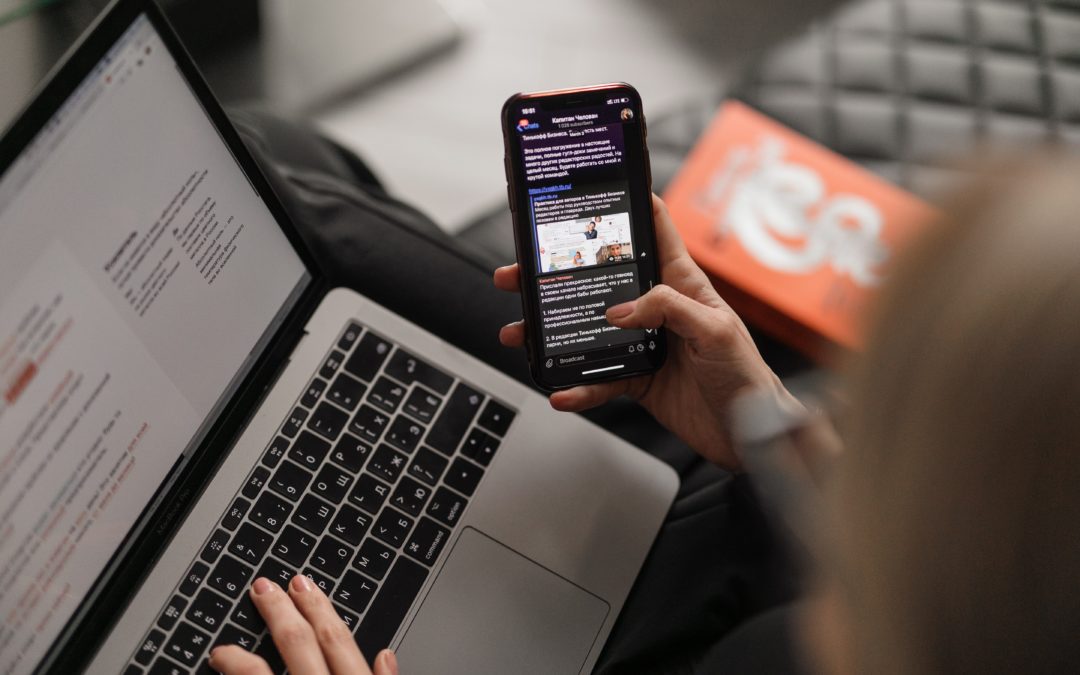
by Marra McDonald | May 30, 2023 | Uncategorized
We are always looking for ways to improve our lives and how we accomplish things, and the healthcare industry is no different. In fact, patients in this industry are constantly looking for ways to improve their health on their terms. Read on to learn why the future of healthcare should be primarily focused on customer service.
1. Patients Determine the Future of Healthcare
Take a look at any industry… what is the greatest determining factor of whether a product or company succeeds? Whether they have the customers to fund it.
The same can be said about the future of healthcare. Whether a patient uses or returns to your facility depends on a number of factors: distance, cost, bedside manner, etc. The overarching category is customer service. This means that your facility’s ability to grow is based on how it is viewed by the patients who visit it. Good experiences lead to better reviews, higher communication between patients and doctors, and an overall increase in patients.
2. Growing Competition
Another aspect facilities need to be aware of is the amount of growing competition in the healthcare space. Chief Healthcare Executive explains: “Health systems need to act with urgency in improving the consumer experience, since hospitals are facing growing competition in the healthcare market,” said Mark Sevco, president of UPMC Hospitals.
What does this mean for your facility? In order to become the future of healthcare, you must stay ahead of the competition, especially if you are located in highly-populated locations.
3. What We Know About Healthcare Patients
Lastly, to understand how to move forward in healthcare, we have to understand what our patients want and need from us.
Patients today are cost-focused. With the current state of the economy, people are more cautious about where they spend their hard-earned dollars. They may even delay care if they do not deem it necessary.
Patients are also technology-focused. We live in a society where when people want something, they want it yesterday. They don’t want to call around, playing a back-and-forth game to set appointments or manage their prescriptions. They want to utilize the technology at their fingertips to get answers to their questions, make plans, and connect with their healthcare providers easily.
How Can You Become the Future of Healthcare?
In order to become the future of healthcare, you must take these three aspects into consideration. Your patients will either drive you forward or make your facility obsolete.
The best way to put your patients first is by utilizing a technology-based platform. This meets customers where they are on every level. They are provided better care, which means they are more likely to return. The facility stands out against the competition that does not have these measures in place. Lastly, utilizing a healthcare platform allows the patient to save costs on unneeded extra visits and get them answers quickly.
Notivate Health allows you to meet all of these needs and more. Utilizing this platform in your facility will ensure that you become the future of healthcare wherever you are located.
If you would like more information on how this platform can benefit you and your patients, contact us to schedule a demo today.

by Marra McDonald | Apr 17, 2023 | communication, Uncategorized
HIPAA compliance is essential for healthcare facilities. Staying compliant protects not only your providers and facility but your patients as well. This is why it’s important to understand exactly when lines have been crossed and you are no longer following HIPAA guidelines, along with the repercussions your facility could face. Here are 5 of the most common examples of HIPAA compliance violations and the fines that may be associated with these incidents.
Example 1: Mishandling Patient Information
One of the categories of HIPAA compliance violations that sums up a majority of the individual issues facilities face is mishandling patient information.
This could be anything from not properly disposing of old medical records to accidentally sharing someone’s information with the wrong patient. Most of these violations are the result of inattention or carelessness. However, in some extreme cases, you may find that staff or providers knowingly mishandle patient information.
The best way to prevent this HIPAA compliance violation is by keeping your staff well-trained and taking extra precautions whenever patient data is involved. Double-checking information before it is shared, sent, or disclosed to another individual is necessary. In addition, getting proper authorization to share protected health information only with patient-specified third parties is key.
Example 2: Not Taking Technology Precautions
Another big issue many facilities may face is not using the proper technology features to protect patient data. One area where this is essential is chatting or messaging patients about their care. For example, this article discusses how a HIPAA-compliant chat is necessary for speaking with patients.
Luckily, Notivate Health has a HIPAA-compliant chat feature that allows you to securely speak with your patients. Their data is end-to-end encrypted to ensure that no one else can access their private information.
Example 3: Lack of Proper Training
Simply not training your staff on the ins and outs of HIPAA is enough for a violation. Under HIPAA regulations, covered entities and business associates are obligated to offer HIPAA training to their workforce members who come into contact with protected health information (PHI). This implies that even modest medical practices must provide HIPAA training to their personnel. It is crucial for doctors to receive adequate training as well.The best thing you can do for your facility in order to assure HIPAA compliance is to ensure that your staff is adequately trained.
Keep your providers and staff up-to-date on any new HIPAA regulations. Review the HIPAA standards frequently. Complete audits of your own facility to ensure that everything and everyone is still HIPAA-compliant. This is the best and easiest way to prevent any issues in the future.
Example 4: Discussing Patient Information With Others
Sharing information with individuals not authorized by the patient to receive it, or with healthcare providers who are not involved in the patient’s care, is considered a HIPAA violation. To avoid this breach, it is essential to restrict discussions about the patient’s care to authorized representatives, the patient, and those who require the information to provide treatment. Maintaining this privacy is straightforward: ensure that conversations about patient care are only held between you, the patient, and their authorized representatives.
Example 5: Not Protecting Devices With Patient Information
It is essential to safeguard any device that grants access to patient information and health records, such as phones, tablets, and computers. Even accessing work-related emails on your phone may put PHI at risk. If a device holds protected health information, you MUST provide encryption. If the device is compromised and you are unable to provide evidence of encryption, it is necessary to adhere to the regulations of the HIPAA Breach Notification Rule and you could face significant fines.
In addition, protecting electronic devices, such as phones and laptops, from being stolen within a hospital is essential to prevent a potential breach of patient data. Theft of these devices containing PHI can lead to a significant violation of patient privacy and result in severe consequences, including hefty fines and loss of reputation for the hospital or healthcare organization. Thus, taking adequate security measures, such as implementing access controls, encryption, and physical security, is crucial to prevent theft and ensure the confidentiality, integrity, and availability of PHI.
HIPAA Compliance Violation Fines
By violating HIPAA, whether through one of the examples above or in another way, your facility may face hefty fines as a consequence.
For example, the American Medical Association shares the different ranges of fines that you may face depending on the type of violation. It could be anything from $100 for a mistake that was made unknowingly to over $60,000 for a violation that was made knowingly and not corrected in a specific amount of time.
However, regardless of the cost of the fine, your job as ahealthcare provider is to ensure that your patients’ information is secure. This ensures that they can trust you with whatever medical problems they may be facing now and in the future.
Notivate Health has developed its platform while considering HIPAA compliance. We created our chat features, customizations, and telehealth appointment software with a focus on ensuring the security of your patients. If you require further details on how Notivate Health can assist you with HIPAA-compliant text, chat, and email services, contact us today.

by Jeana | Apr 2, 2023 | Uncategorized
All healthcare facilities have them: missed appointments caused by patients who don’t show up when they’re scheduled to. However, many people may not understand that there is actually a cost associated with these missed appointments. Read on to find out the cost of missed appointments nationwide and the steps you can take to limit them in your facility.
The Actual Cost of Missed Appointments
As a healthcare provider, the time you spend with patients is crucial. Each provider can see only so many patients in a day or week, which means each time slot on your schedule is important. However, when patients are a no-show, it hurts not only the patient’s health but your facility’s income as well.
According to RoundTrip, missed appointments cost healthcare facilities approximately $150 billion each year. However, this isn’t the only cost of missed appointments you may face. Besides the money and time of your providers, it can also hurt your patients.
Just because a patient doesn’t show up for their appointment, it doesn’t mean they are feeling better or don’t have any health concerns. Most of the time, there are other reasons why the patient can’t make it to their scheduled appointment. This means they are missing out on the care they may need, leading to their overall health taking a toll.
Why Do Patients Skip Appointments?
There are a variety of reasons that your patients may not show up when they are scheduled to. A major reason is not having adequate transportation to get to their appointments. If they have no way of getting to the facility, there is no way they can keep a scheduled appointment.
Another reason could be not understanding why they need to keep their scheduled appointments. For example, if they did not receive clear instructions after being discharged or were unsure of what to look for regarding follow-up care, they may not think their appointment is a big deal. A healthcare follow-up survey can help uncover issues related to unclear instructions or confusing follow-up care. Notivate’s post-discharge surveys return results to your staff in almost real-time, so they can follow-up with patients who might not understand their post-discharge instructions.
Patients who do not understand the importance of follow-up care may not think their appointment is a priority and may skip it, which can lead to more serious health problems. If it isn’t a priority, other things such as work or family events may cause them to put their health at the bottom of their to-do list.
How You Limit the Cost of Missed Appointments in Your Facility
If you’re struggling with missed appointments in your facility, you could send automated appointment reminders via voice, text or email to patients. This makes the patient’s appointment a priority and prevents it from slipping their mind in exchange for something less important.
Another benefit of using appointment reminders is allowing the patient to cancel or reschedule with a simple text. By giving patients a chance to change their scheduled appointment without having to call your facility to do so, they will be less likely to become a no-show.
Notivate’s platform allows you to create a “waitlist” for patients needing an appointment. Using this feature, a patient in need can quickly fill a canceled appointment, and your facility doesn’t have to call patients to set it up!
Studies have shown that appointment reminders can significantly reduce missed appointments. For example, a study published in the Journal of General Internal Medicine found that sending appointment reminders via text message reduced no-show rates by 34%. Another study published in the Journal of Medical Internet Research found that email reminders effectively reduced missed appointments by 26%.
Overall, limiting the cost of missed appointments in your facility is much simpler than it may seem. By setting up automated systems, you could save your facility thousands of dollars in missed appointment costs and help more patients get the care they need.
If you’d like to learn more about how the Notivate Health platform can benefit your facility, book a demo today.
Photo by Pepi Stojanovski on Unsplash.

by Marra McDonald | Mar 6, 2023 | Uncategorized
Utilizing online tools to connect with your patients is increasingly important in this digital age. This allows you to meet them where they are and provide them with the information they need to make decisions about their care. On top of that, there are digital tools available that allow you to streamline patient surveys and get the results your facility needs to improve patient care. Let’s look at some of the ways Notivate Health’s platform can help you achieve these goals.
Compare Results for Improvements
First of all, one of the best features of Notivate Health’s survey application is that it allows you to compare results across multiple locations. As a network of healthcare facilities, you may have different needs based on different locations. You can use this digital tool to streamline patient surveys and gather results based on the specific needs of each location.
In addition, you can then take the results from these surveys and compare them to other providers and locations. Our system utilizes CAHPS benchmarks to provide you with the data you need to come to a conclusion about individual providers. Viewing physicians and other staff across your healthcare organization’s ecosystem can significantly improve the overall quality of patient care.
Notivate’s surveys can identify top-performing physicians, analyzing performance metrics such as patient outcomes, complication rates, and patient satisfaction, so you can learn from their practices. In our easy-to-read dashboard, this analysis can also highlight areas where improvement is needed, enabling the system to provide targeted education and training to physicians who are struggling in specific areas.
Comparing physician performance within the system can also incentivize physicians to improve their performance, leading to increased quality of care for patients. Ultimately, this approach to physician evaluation can help the healthcare system identify and replicate best practices, resulting in improved patient outcomes and satisfaction.
Using these comparison tools, you can filter results to look at different data trends and get a better overall view of patient care.
Search for Keywords
Another great aspect of Notivate Health’s system to streamline patient surveys is the ability to highlight and search for keywords in survey results. Digital surveys can be valuable in gathering patient feedback about their healthcare experiences. However, it can be challenging to sift through the vast amount of data generated by these surveys and identify which patients may need additional follow-up care. This is where pre-set alerts can be particularly helpful. These alerts can be configured to flag certain responses or patterns of responses that may indicate potential issues or misunderstandings. For example, suppose a patient indicates that they did not receive clear instructions on how to manage their medication. In that case, an alert can be triggered to prompt a follow-up call from a nurse or pharmacist to provide additional guidance. Similarly, if a patient expresses dissatisfaction with their overall experience, Notivate’s system will trigger an alert to initiate a conversation with the patient to identify specific areas for improvement.
By leveraging these alerts, healthcare providers can quickly identify and address potential issues, thereby improving patient satisfaction and ultimately, patient outcomes. Additionally, these alerts can help healthcare providers to proactively manage potential issues before they escalate, preventing more significant problems down the line. Overall, pre-set alerts based on digital survey data can be a powerful tool to improve patient care and experiences. Using keyword alerts allows you to focus your efforts on the patients who truly need it. Rather than going through individual surveys one by one, this alert system enables you to streamline patient surveys and connect with patients in need.
Utilize Your Custom Survey
To streamline patient surveys for your facility, you may have a series of questions that you would like answered by your patients after they have been discharged. Luckily, Notivate Health has a solution that allows you to include these facility-specific questions.
You can upload and send a custom survey to your patients following their visit. This allows you to include questions that relate specifically to the type of visit your patient had or the type of facility they visited.
However, you can also send a standard CAHPS survey to your patients following their visit. Whichever option you choose, the system will automate the process and help you gather patient results quickly after their visit and return those results in a simple format anyone in your facility will understand.
Surveys play a crucial role in patient communication. In fact, research by The Journal of mHealth has shown that using digital surveys and telemedicine opportunities can increase patient retention and responses. By utilizing a digital platform to gather patient results, you can improve your facility and patient relationships in the future.
The Benefits of Using Digital Tools to Streamline Patient Surveys
There are many different ways to gather patient information after a visit. However, using the digital tools found in Notivate Health’s platform allow you to streamline patient surveys easily, gather the information you need to make improvements in the future and easily understand that data. Not only can you highlight specific keywords and phrases or include your own survey, but you can also compare the results of these surveys to create a better patient experience across the board
If you want to learn more about how Notivate Health can improve patient interactions, contact us today.

by Jeana | Feb 22, 2023 | Uncategorized
When it comes time to refer your patients to other specialists, especially those in your network, you want to ensure that they still receive high-quality care once they leave yours. However, there are many issues a patient may run into before they make it to the specialist’s office. Let’s discuss what those issues may be and how introducing automated messaging can improve their overall experience.
Issues With Patient Referrals
Patient Adherence
There are many problems that your patients may run into when it comes time to send them over to a specialist. One of the biggest issues is patient adherence. The physician may face challenges in ensuring that the patient follows through with the referral. The patient may be reluctant to see a specialist, or may not have the time or resources to do so.
To ensure a patient follows up with a referral, it’s critical that you explain to the patient the importance of following up with the referral. Emphasize the benefits of seeing a specialist and the potential risks of not doing so.
Timeliness
In some cases, time is of the essence when referring a patient to a specialist. The physician may need to expedite the referral process to ensure that the patient receives prompt care and prevent the progression of their condition. Some conditions, such as cancer or heart disease, require early detection and prompt treatment for better outcomes. Referrals to specialists can help diagnose and treat these conditions in their early stages, which may be crucial in preventing their progression. In addition, early intervention and treatment of medical conditions can reduce the need for more complex and costly treatments in the future. For example, catching a cancer diagnosis early can lead to a simpler and less expensive treatment plan, while allowing it to progress may require more extensive and costly treatments, such as surgery or chemotherapy.
Patient Interaction
Good communication between the referring physician, the patient and the specialists is critical to ensure that the patient receives appropriate care. The physician must ensure that the specialist has all relevant information about the patient’s medical history and current condition because a lack of communication between the referring physician and the specialist can lead to suboptimal care and outcomes for the patient.
How you handle patient interaction once they are no longer in your care is critical. When it comes time to move from one doctor to another, it’s important for everyone to stay in the loop. Unfortunately, this transfer can sometimes lead to misinformation or lack of communication with the patient.
When a patient leaves your facility, you want to be sure that they understand the next steps for their care. While there are many actions you can take to ensure this, iincluding sending out post-discharge surveys, when a patient referral is involved, using automated messaging is one of the the best courses of action.
The Benefits of Using Automated Messaging with Patient Referrals
When patients receive timely referrals to specialists, they are more likely to be satisfied with their care. They will feel that their health concerns are being taken seriously and that their healthcare providers are working together to ensure they receive the best possible care. Automated messaging can fill in many gaps at your facility. It can provide patients with care instructions, and appointment reminders and prompt them to fill out information or surveys before or after their visit.
Another benefit of automated messaging is how it allows you to lead patient referrals and keep open communication between your facility, the patient, and the specialist. By utilizing a secure messaging feature, you can share details with the patient about who they need to follow up with after they leave your facility, and ask questions about that follow-up care. You can also take this opportunity to provide a seamless transition from your facility to the specialists by prompting the patient to fill out the necessary information that is shared with the new specialist.
By referring patients to specialists in your own network, you can also use Notivate Health’s easy and affordable platform to share communications beyond your facility. Using EHR-integrated technology, you’re able to share important patient information with other healthcare providers quickly, always ensuring that your patient’s information is passed on securely and that the new specialist is up-to-date with the patient’s needs.
The Importance of Communication
Communicating with your patients should be a top priority. Good communication is the only way to ensure that the patient receives the information they need about their health and that there aren’t any gaps or problems moving forward. It also ensures that moving from provider to provider is a smooth transition and nothing about the patient’s history or their ability to reach the new specialist is left out.
According to a study shared at the AMIA Annual Symposium, it was shown how beneficial implementing an electronic messaging system is to share information with patient referrals.
They explain that the results from their study were overall positive regardless of outside factors such as an additional workload or hardware issues.
Overall, using automated messaging with your patient referrals can improve how your facility handles these interactions as well as your overall patient interactions. The issues that come from transferring patients from one provider to another become lessened by using this type of technology.
If you would like to learn more about Notivate Health and how our platform can improve patient care, request a demo today.

by Marra McDonald | Dec 1, 2022 | Uncategorized
There are so many different options for performing research on your patient’s experience and what their needs are. Although they all have pros and cons, one of the best ways to get the most accurate results is through mixed-methods research. Let’s briefly discuss these different methods and how you can combine them to get the full picture.
Text Research
This method can be seen in two ways: typical paper surveys, like the HCAHPS survey, or text message surveys.
After your patient leaves the facility, they may receive a textual survey in the mail to reflect on their experience and provide feedback. This is a much slower method as it must be mailed to the patient and then mailed back.
Your facility could also use text messaging to gather responses and patient feedback. However, it’s important to recognize that if you use this method, you need to have a secure, HIPAA-compliant SMS platform so that your patient’s data stays secure and private.
In-Patient Exit Interviews
Another popular option for gathering patient data is through in-patient exit interviews. This is a great method for gathering data before the patient leaves the facility and is also helpful to ensure the patient has any final questions answered and leaves with a positive experience.
To make the most of these exit interviews, providers may have specific questions they ask, but it should feel more like a conversation. This allows the patient to feel like their provider is actually listening to their responses, not just gathering information for mixed-methods research.
Phone Research
A few days after the visit, you could also perform phone-call research. This gives a more personal feel than an email because there is someone listening on the other line. Phone research should also be used to clear up any patient concerns or direct patients to additional information should they need it.
One problem with live phone research is the staff time required to schedule and conduct the call. When you consider the time it takes to work around missed calls, staff PTO, training and the actual time on the phone, live phone-call research is not the most cost-effective option.
Email Research
Similar to phone research, an email could be sent to the patient a few days after the visit to check in and clear up any concerns, as well as give the facility some valuable information. This method allows the patient to fill out questions on their own time and can gather greater details than a text survey alone. There are plenty of survey options, but similar to text messaging, you should use a platform that can keep your patient’s information private and secure.
Web-based Surveys
Many of Notivate’s healthcare customers combine email, text and web-based surveys. Sending an email or text message that links to a secure and personalized landing page to gather data, web-based surveys allows you to gather in-depth, actionable data to help improve your healthcare facility processes and procedures.
Performing Mixed Methods Research
In order to perform mixed methods research, you would use a combination of the previously-mentioned methods. This allows you to fill in gaps left from one method by using a secondary measure.
One article explains that mixed methods research combines the quantitative data that the provider would perform by looking through patient data and other research that provides numerical data. Then, they can combine this information with qualitative research through the methods discussed in this article.
For example, the data from an in-person exit interview could be used or “rolled over” for an SMS survey sent a few hours after the patient leaves the facility. This method of mixed methods research allows you to build upon the data you learned previously to ensure that your patient’s care is continuously monitored. In addition, they won’t simply be answering the same questions over and over again with each survey sent.
Additionally, you could use mixed-methods research to reach the patient in multiple ways. If they are not responsive using mail-in surveys, you could try email. Or, if they aren’t responding to an email, you could try an automated phone call. This ensures you have multiple touchpoints to connect with a patient and gather the information you are looking for.
Lastly, you can use mixed methods research to combine what your providers know about the patient and their conditions and compare it to the data they receive from these surveys. This will allow you to better treat patients with these same conditions or concerns in the future.
Mixed Methods Research with Notivate’s Platform
Notivate’s platform makes mixed methods research easy to perform. With our different EHR integrations, you can track previously-submitted data, contact information, and send out private and encrypted messages or surveys via email, text or phone to gather information. If you would like more information on how you can use Notivate’s platform to perform research, contact us today.






Recent Comments